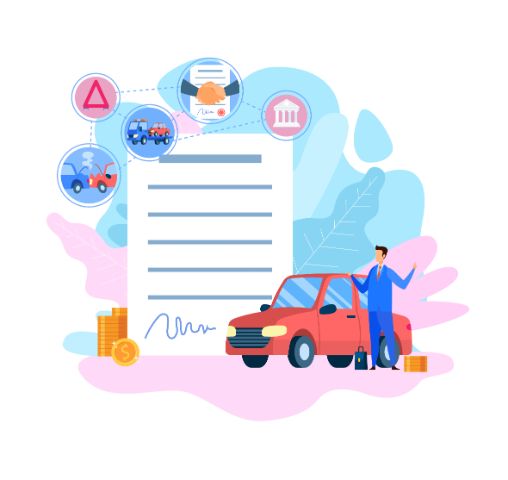The higher the IDV the better! Or is it?
The higher the IDV the better! Or is it?

When you purchase a vehicle, it is mandatory for you to have to buy car insurance as well, in accordance with the law. This car insurance policy will allow you the financial protection and buffer you might require if you are in an accident and have faced damage to your car, or have damaged someone else’s. The repairs then, are paid for by the insurance company, provided your claim is approved. Since these companies have to endure a certain amount of risk, a car insurance renewal is often carried out every six months to a year.
For the insurance company, this allows them to alter rates based on the current value and state of your car, as the value continually depreciates once the car leaves the showroom. Let’s take a look at why this seemingly minor formality could have an extensive bearing on the insurance premiums you pay, and how you can set your Insured Declared Value (IDV) in a way that allows you the most benefit.
What is IDV in Car Insurance
Before we can understand how to make your Insured Declared Value (IDV) work for you, we must first understand what it is.
Put in its simplest terms, the IDV of your car represents the maximum payout that the car insurance company will pay out to you as the owner in the event of an accident. One can see why this value varies every time a car insurance renewal takes place, as the value of the car has depreciated. The depreciation is oftentimes calculated by the insurance company after taking into account a number of variables such as damage to the car, kms driven, market value etc.
Insured Declared Value (IDV): Calculations for a car
Insurance companies carry out the IDV calculation in order to calculate not only their exposure and risk but also the premium that you will pay once you finalize your car insurance renewal. The calculation is carried out based on a simple formula that subtracts the depreciation percentage from the manufacturer’s listed price, and if there are any added accessories, this is accounted for as well.
These two formulae are employed during your car insurance renewal based on whether you have any accessories or not.
● IDV =Manufacturer’s registered price - depreciation amount.
● IDV = (Manufacturer’s listed price - depreciation amount) + (Cost accessories - depreciation amount of accessories).
How to Set the Correct Insured Declared Value (IDV) accurately?
Now that we know that the IDV of your car is calculated based on the depreciation value of the vehicle, the next logical step would be to find out the depreciation value in order to accurately set your IDV. Generally, the following depreciation format is followed, and you can refer to it in advance to set your IDV so that you can ensure you do not settle for IDV as that is the maximum payout you can receive.
| Age of the Car | Depreciation percentage. |
| 6 months or less | 5% |
| Between 6 months and 1 year | 15% |
| Between 1 and 2 years | 20% |
| Between 2 and 3 years | 30% |
| Between 3 and 4 years | 40% |
| Between 4 and 5 years | 50% |
Why is providing the Correct Insured Declared Value (IDV) Important?
This is because the IDV directly affects the premium you pay and the maximum amount you can receive if your vehicle is damaged or stolen. There are two points to consider:
1. If you set the IDV too low, you will have to pay a lower premium but will receive a lower amount as well.
2. If the IDV is set too high, you ensure you get a slightly bigger payout, but will have to pay higher premiums.
Naturally, the ideal scenario is a balance somewhere in the middle points one and two.
Factors to Consider While Setting Your Insured Declared Value
Making an accurate IDV declaration increases the chances of a rightful claim It is possible that you never have to claim insurance, but gunning for a higher IDV might not be the best course of action.
The age, make and model, city of registration as well as standard depreciation all play an important role in the IDV valuation come time for your car insurance renewal.
Conclusion
While companies calculate the IDV based on their assessment, it is possible you get some leeway through your policy agent etc, which can be used tactfully. If your car is older, you might consider a lower premium because the depreciation is likely nearing 50%. If you have a newer car, a higher IDV might be a good idea. You can use the aforementioned table to calculate what the most accurate outcome to prioritize would be, based on how your vehicle depreciates over time.
Disclaimer: The above information is for illustrative purpose only. For more details, please refer to policy wordings and prospectus before concluding the sales.
RELATED ARTICLES
Save more by avoiding these common mistakes while renewing car insurance
Car Insurance Due for Renewal: Tips to get Cheaper Car Insurance
IDV in Car Insurance – Important Things to Know
Importance of Choosing Correct IDV When Buying Car Insurance










 Health Insurance
Health Insurance  Travel Insurance
Travel Insurance  Car Insurance
Car Insurance  Cyber Insurance
Cyber Insurance  Critical Illness Insurance
Critical Illness Insurance
 Pet Insurance
Pet Insurance
 Bike/Two Wheeler Insurance
Bike/Two Wheeler Insurance  Home Insurance
Home Insurance  Third Party Vehicle Ins.
Third Party Vehicle Ins.  Tractor Insurance
Tractor Insurance  Goods Carrying Vehicle Ins.
Goods Carrying Vehicle Ins.  Passenger Carrying Vehicle Ins.
Passenger Carrying Vehicle Ins.  Compulsory Personal Accident Insurance
Compulsory Personal Accident Insurance  Travel Insurance
Travel Insurance  Rural
Rural 











